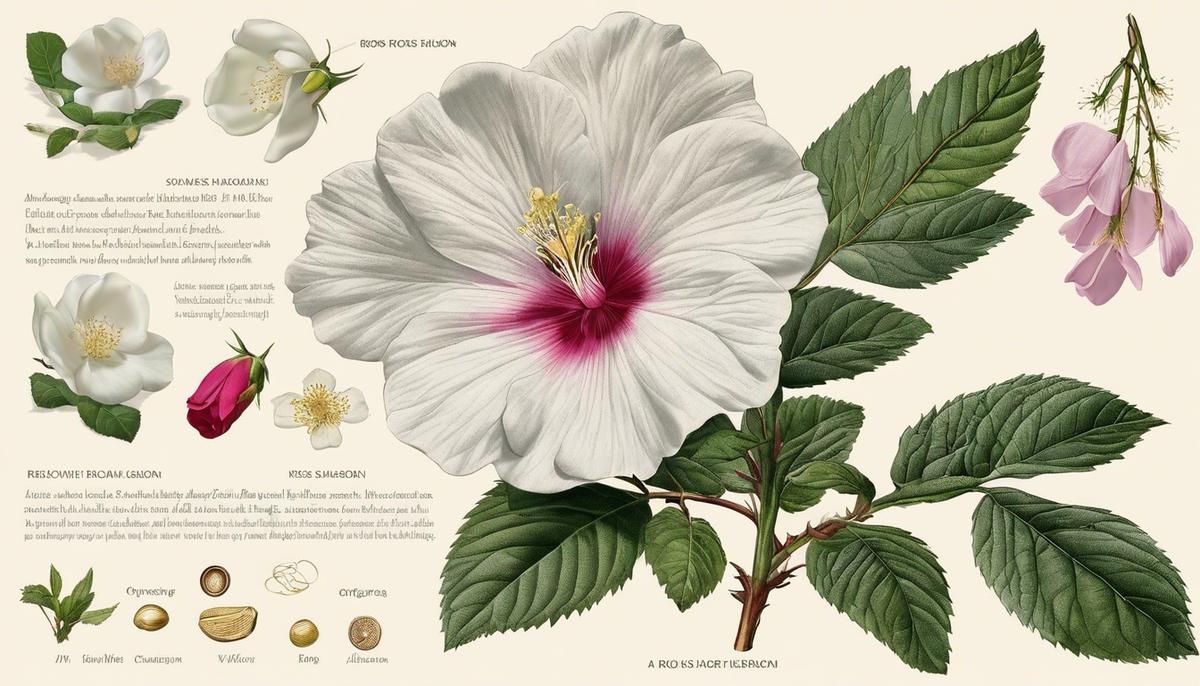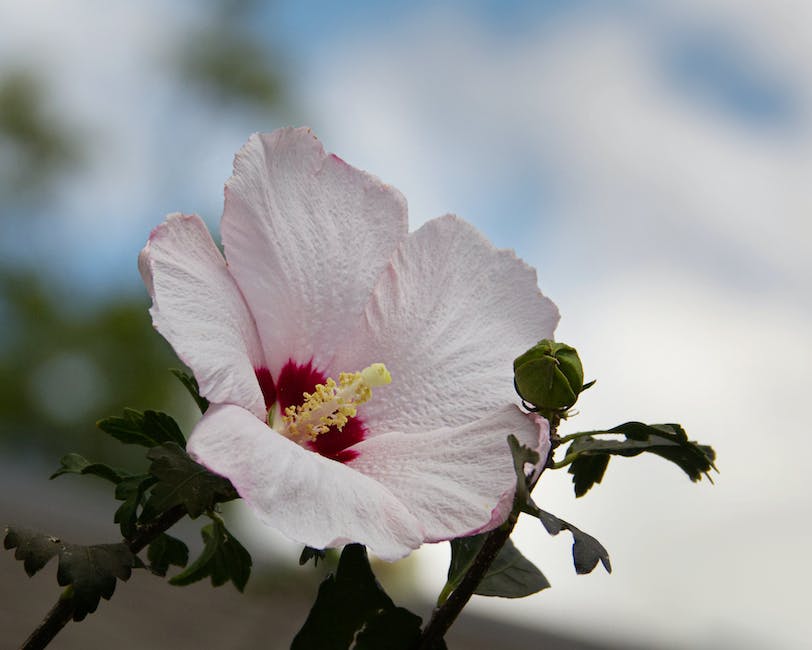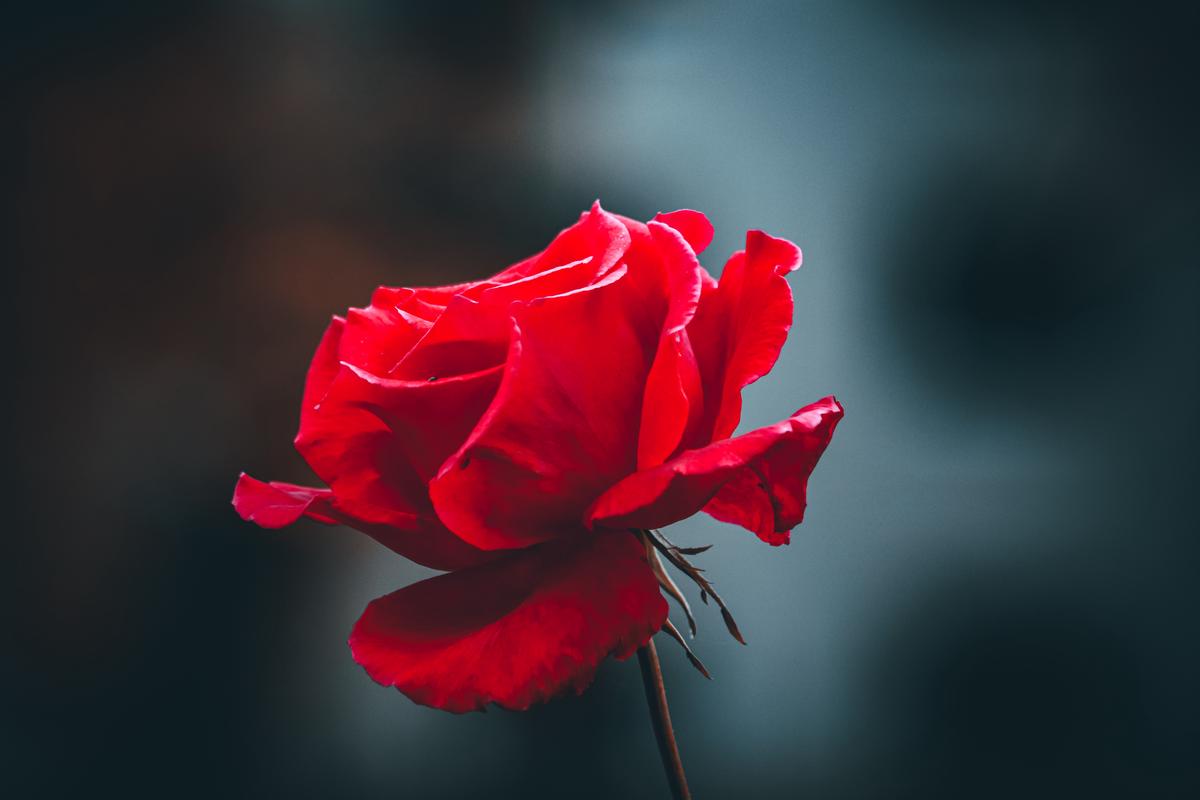Efficient Guidelines on How to Prune a Rose of Sharon

Renowned and celebrated for its boisterous blossoms and pleasing appearance, the Rose of Sharon plant is something any garden enthusiast can appreciate. As they grace our gardens with their mesmerizing charm, a little extra knowledge and mastery of their care can go a long way. This write-up is specifically designed to equip you with in-depth understanding of the basic structure, growth cycle, and pattern of these magnificent plants, enabling you to optimally prune and maintain them. More than just a gardening chore, successful pruning in effect reflects your comprehension of the plant, its biology, and essential care requirements. By providing insights on proficient pruning techniques, we intend to help you master this pivotal part of plant care, enhancing both the plant’s health and aesthetic appeal.
Understanding the Rose of Sharon
Title: “Rose of Sharon: Trim to Thrive – A Practical Guide to Pruning”Title:
“Rose of Sharon: Trim to Thrive – A Practical Guide to Pruning”When it comes to the alluring world of horticulture, the Rose of Sharon offers a myriad of captivating qualities that elevate the craft to its riveting peaks. Internationally renowned for their exotic beauty, these deciduous flowering shrubs can add a spectacle of color and charisma to any garden landscape. However, to really let this botanical beauty thrive and create an impressive display, mindful and informed pruning becomes a crucial task.
The most distinctive feature of a Rose of Sharon that demands careful consideration prior to pruning is its late-season blooming habit. Unlike many other hibiscus relatives that bloom earlier in the season, the Rose of Sharon typically doesn’t commence its bloom cycle until late summer, extending its display into fall. Therefore, choosing the optimal pruning time becomes essential. Winter or early spring pruning is typically recommended for this horticultural gem when the plant is in its dormant state. By doing so, garden enthusiasts can avoid accidentally eliminating the budding new shoots that promise to unfurl into captivating blooms.
Another unique characteristic of the Rose of Sharon is its exponential growth rate. A healthy, thriving Rose of Sharon can grow up to 2-3 feet annually. While this results in a lush, dense shrub, it can also lead to an unruly, disordered appearance if not regularly maintained. Pruning not only helps to control the growth, but also enhances the form of the plant, while encouraging increased flower production. Additionally, proper pruning can boost the health of the shrub, by allowing better airflow, reducing susceptibility to disease, and facilitating easier and more effective treatment if needed.
The Rose of Sharon is also known for its plenitude of buds and flowers. Therefore, it’s advisable to pay heed to the fact that cutting back too drastically can adversely impact the anticipated abundance of flowers. Gentle, gradual pruning is generally the best approach, aiming to remove no more than one-third of the total volume in any single year.
Keep in mind the Rose of Sharon’s amazing ability to regenerate. Even the most severely pruned plants manage to push out vigorous new growth. However, temper this knowledge with the understanding that recovery will take time, and it might be a year or two before pristine flowers are once again on show.
Lastly, unparalleled in its diversified offering of spectacular flower forms, colors, and double blooms, the Rose of Sharon tends to produce random reversion shoots from time to time. These shoots are often different in appearance from the parent plant, manifesting in smaller or single-type blooms. Be vigilant in identifying and removing such shoots at the earliest, to ensure the main plant retains its original grandeur unaltered.
Understanding the distinctive features of the magnificent Rose of Sharon invariably makes the pruning process more of an art form than a mere maintenance chore, maximizing the plant’s potential to excel in its surreal landscape contribution. With consistent attention and informed care, any gardening enthusiast can harness this majestic botanical wonder to bloom in all its resplendent glory.

Pruning Techniques
Tucking at the Heartstrings of The Hardy Rose of Sharon
An exciting facet of tending to the resilent Rose of Sharon is understanding the spectrum of their flexible tolerance. These beauties are no damsel in distress – even in the harshest of conditions, they manage to bloom with vibrancy, reminiscent of a Hawaiian hula dancer swinging unabashedly in her grass skirt.
To better inspect the health of your Rose of Sharon, consider the lifeblood pumping into each leaf – the woody stems. Keep an eye out for cortex splitting, a condition that occurs due to rapid water uptake after drought periods. The hydrated outer layer splits while the inner part dries out, thus weakening the plant’s overall vigor. An easy fix? Watering well in the early morning during dry spells and reducing water use after rainfall.
Moving to another note in the symphony of nurturing the Rose of Sharon, let’s delve into soil specifics. Remember the Hawaiian hula dancer? Well, this plant hails from the same family – the Hibiscus, hence they love a meal rich in organic matter. Think compost, well-rotted manure, or leaf mold. Layer roughly 3-4 inches of organic mulch around the base, sans touching the stem, to cater to its nutrient needs while cutting back weed growth.
Adding to the ever evolving dance of dealing with pests and diseases, the Rose of Sharon battles its own leviathans. Be on the lookout for aphids, whiteflies and spider mites that nibble away on its vitality. An infestation might result in yellowing leaves, wilting, or reduced blooming. Combat these attackers with regular leaf and bud checks. Consider spraying the plants with water or organic pesticides to keep these pesky invaders at bay.
Surprisingly, the Rose of Sharon is not only a master of blooming in drought and frost, but also of cloning itself without assistance. Known as seed propagation, it effortlessly scatters its own seeds; a gift for gardeners, a potential menace to non-fans as they can invade lawns quickly. So, as a responsible hobbyist, maintain your garden’s harmony by removing these seedlings early on.
Finally, in the love affair with these robust beauties, there exists a special bond with butterflies and hummingbirds. Yes! Rose of Sharon serves as a noble host, providing nectar to these winged wonders. So, besides adding an artistic palette to your garden, these trees play a crucial role in the ecosystem by aiding the survival of these gorgeous creatures.
Nurturing a Rose of Sharon plant is a journey full of excitement, surprises and deep satisfaction. Disguised amidst the challenges are the magical tales of discovery and joy of seeing her bloom in full glory, leaving a lasting impression, just like the hula dancer’s mesmerizing dance.

Post-Pruning Care
When it comes to plant husbandry, the Rose of Sharon, known scientifically as Hibiscus syriacus, stands out as a tolerant and resilient shrub. Sporting woody stems that might occasionally split on the cortex, these plants are equipped admirably for survival. The key to their vigor, however, lies in proper care post-pruning.
Water is an essential care step for your Rose of Sharon, but striking a balance is vital. Overwatering can lead to root rot and suffocation while under-watering will stress the plant, affecting blooming and overall health. Generally, a watering routine that keeps the soil evenly moist, especially for young plants or during dry spells, is encouraged. Mature plants have better drought tolerance, thanks to their woody stems.
Soil plays an immense role in the health of your Rose of Sharon. This hardy shrub does well in various soil types, from clay to loam, yet the use of organic matter, such as compost or well-rotted manure, can substantially improve soil structure. Good compost improves drainage in heavy clay soils and adds nutrients that boost the vitality of your plants.
One of the essential tasks after pruning is to be vigilant for signs of pests and diseases common with Rose of Sharon. Pest such as aphids, whiteflies, and spider mites can take a toll on the plant’s health. Stay proactive and inspect the plants for pests. Insecticidal soaps or oils are recommended for mild infestations, while systemic insecticides may be required for severe cases.
Diseases too, such as cankers, leaf spots, and rust, often beset this shrub. In case of disease, remove the affected plant parts immediately and apply appropriate fungicide treatments. Always keep the surroundings clean to discourage disease spread.
After pruning, propagation from seeds becomes a possibility, but one must, however, be aware of the potential invasiveness. Rose of Sharon can prolifically self-seed, and to control them, remove seed pods in fall before they get a chance to disperse.
Finally, let’s not forget the ecological role of Rose of Sharon. This shrub is a magnet for pollinators, attracting both butterflies and hummingbirds thanks to their nectar-rich flowers. They not only offer a feast for your eyes but also contribute to conserving the ecosystem.
Taking care of a Rose of Sharon shrub can be compared to nurturing a living work of art. With patience, attention to detail, and some botanical wisdom, you can have a blooming masterpiece in your garden year after year. Keep pruning, keep growing, and keep enjoying this wonderful hobby.

Photo by boysinbristol_photography on Unsplash
Ultimately, the wellness and splendor of your Rose of Sharon plant is contingent on meticulous care and attention, with pruning playing an integral part. This endeavor is not just about snipping and trimming; it encapsulates an appreciation of the plant’s biology, the mastery of various pruning techniques, and post-pruning nurturing. The more you understand your plant, its growth pattern and seasonal changes, the more confidently and efficiently you can navigate the pruning process. Plus, being aware of the signs of a well-pruned Rose of Sharon will not only validate your hard work but also inspire you to learn and grow along with your garden. Let this newfound knowledge guide you to have a thriving, vibrant Rose of Sharon that stands as testament to your gardening prowess.



